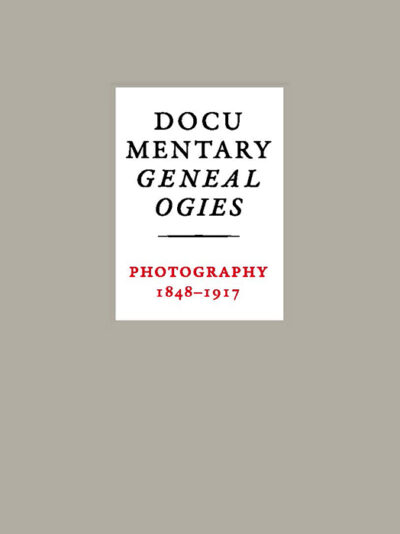[Winter 2024]

Édité par Jorge Ribalta, Documentary Genealogies: Photography 1848–1917, Madrid, Museo Reina Sofia, 2023, 263 pages
By Jill Glessing
Edited by Jorge Ribalta
Madrid, Museo Reina Sofia, 2023, 263 pages
[Excerpt]
Important technologies are designed for and controlled by those holding wealth and power. Photography, as a potent information medium, is one of these. It was developed during the mid-nineteenth century in France and England – Europe’s imperialist heartland at the time – which quickly established them- selves as “the empire of photography,” as André Rouillé put it to denote the use of photography in the advancement of bourgeois, industrial, and colonial culture and ideologies: portraiture affirmed individuals’ socio-economic status; records of monuments and civic buildings bolstered developing nation-states; the art world was infiltrated with picturesque images. But positive values had to be established through their binaric opposites. It was here, in its provision of images of the Other, in what Allan Sekula termed “the shadow archive” – containing the subaltern or proletarian subjects that included servants, beggars, labourers, the unemployed, criminals, the sick, and non-Europeans – that the documentary genre gestated. It grew up within mass democratic movements through the nineteenth century, and reached its mature social documentary form in the early twentieth century…
[ Complete issue, in print and digital version, available here: Ciel variable 125 – AGGLOMERATIONS ]
[ Complete article, in digital version, available here: Documentary Genealogies: Photography 1848–1917 – Jill Glessing ]
